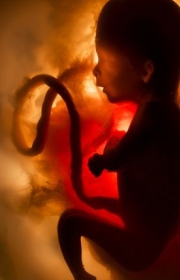 Quite simply, the main function of the umbilical cord is to carry nourishment and oxygen from the placenta to your baby and return waste products to the placenta from the fetus.
Oxygen, nutrients and antibodies from you diffuse into your babys blood and waste materials from the baby pass into your blood, via the two un-oxygenated arteries.
The fetal blood, which is now enriched with nutrients, oxygen and cleaned of waste, is then carried back to your baby by the vein that carries oxygenated blood in the umbilical cord
Quite simply, the main function of the umbilical cord is to carry nourishment and oxygen from the placenta to your baby and return waste products to the placenta from the fetus.
Oxygen, nutrients and antibodies from you diffuse into your babys blood and waste materials from the baby pass into your blood, via the two un-oxygenated arteries.
The fetal blood, which is now enriched with nutrients, oxygen and cleaned of waste, is then carried back to your baby by the vein that carries oxygenated blood in the umbilical cord
What Is the Umbilical Cord Made From?
The umbilical cord develops from, and contains, remnants of the yolk sac and allantois. The umbilical cord at full term is usually about 22″ or 56 cm long and about 2 cm in diameter. The umbilical cord is made of Wharton’s jelly, not ordinary skin and connective tissue. There are no nerves, so cutting it is not painful. There is ordinarily no significant loss of either infant or maternal blood while cutting the cord. The cord contains two arteries which carry deoxygenated blood – from the fetus back to you – and one vein that carries oxygenated blood – from you to the fetus.Cord blood
Recently, it has been discovered that the blood within the umbilical cord, known as cord blood, is a rich and readily available source of primitive, undifferentiated stem cells. Why is this an important discovery? Well, because these cord blood cells can be used for bone marrow transplant. Some parents have opted to have non-clamping of the umbilical cord and extended-delayed cord cutting or nonseverance Lotus Birth in order to provide for full neonatal transfer of this valuable cord blood during the most critical time for neonatal health as well as long term health benefits. Others have chosen to have this blood diverted from the baby’s umbilical blood transfer through early cord clamping and cutting, to freeze for long-term storage at a cord blood bank should the child ever require the cord blood stem cells for example, to replace bone marrow destroyed when treating leukemia.Functions Of The Umbilical Cord



